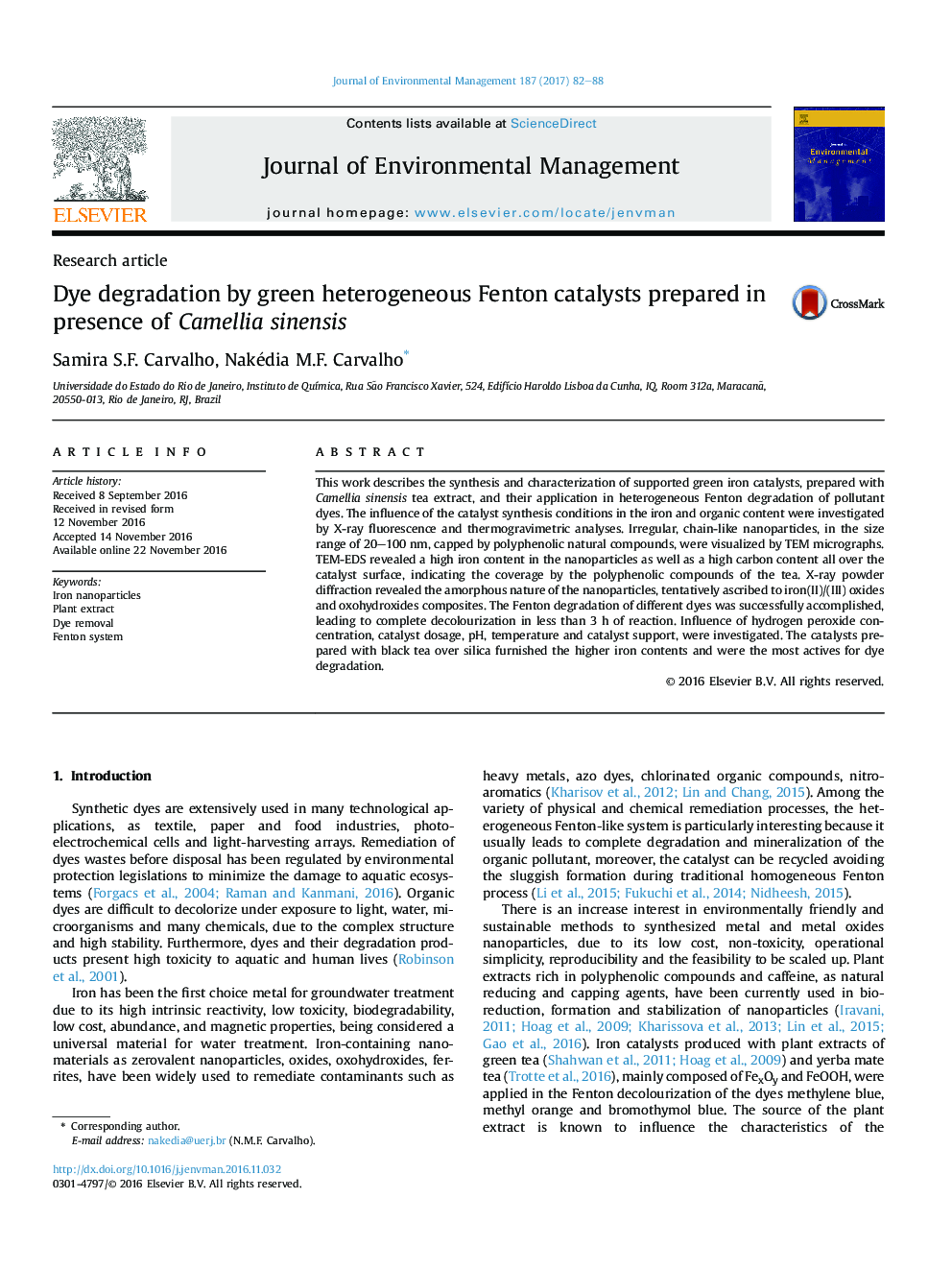| کد مقاله | کد نشریه | سال انتشار | مقاله انگلیسی | نسخه تمام متن |
|---|---|---|---|---|
| 5117357 | 1485228 | 2017 | 7 صفحه PDF | دانلود رایگان |

- Green iron(II/III) nanoparticles were prepared from Camellia sinensis tea extract.
- Tea proportion used in the synthesis influenced the amount of iron in the catalyst.
- Irregular amorphous nanoparticles in the range of 20-100Â nm were obtained.
- The catalysts were applied in dye degradation by heterogeneous Fenton system.
- Different pollutant dyes were successfully degraded.
This work describes the synthesis and characterization of supported green iron catalysts, prepared with Camellia sinensis tea extract, and their application in heterogeneous Fenton degradation of pollutant dyes. The influence of the catalyst synthesis conditions in the iron and organic content were investigated by X-ray fluorescence and thermogravimetric analyses. Irregular, chain-like nanoparticles, in the size range of 20-100Â nm, capped by polyphenolic natural compounds, were visualized by TEM micrographs. TEM-EDS revealed a high iron content in the nanoparticles as well as a high carbon content all over the catalyst surface, indicating the coverage by the polyphenolic compounds of the tea. X-ray powder diffraction revealed the amorphous nature of the nanoparticles, tentatively ascribed to iron(II)/(III) oxides and oxohydroxides composites. The Fenton degradation of different dyes was successfully accomplished, leading to complete decolourization in less than 3Â h of reaction. Influence of hydrogen peroxide concentration, catalyst dosage, pH, temperature and catalyst support, were investigated. The catalysts prepared with black tea over silica furnished the higher iron contents and were the most actives for dye degradation.
158
Journal: Journal of Environmental Management - Volume 187, 1 February 2017, Pages 82-88